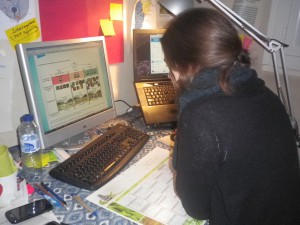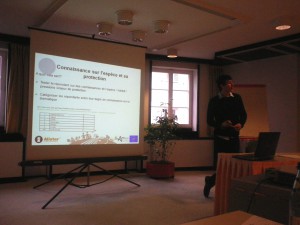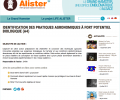ALISTER mixes in with the Alsatian population
13 février 2015In December, Alsatians were able to ask environmental questions in the framework of the Alister Life Project. In a questionnaire drawn up by ACTeon, the Alsatian population was invited to ask questions concerning nature, the environment, and of course, European Hamsters too.
Over 600 people thus responded via Internet, as well as roughly a hundred people that our poll-takers met in the towns of Obernai or Bischoffsheim, two towns where the European Hamster is still present.
Results of this questionnaire will allow us, amongst other things, to:
- assess the level of knowledge Alsatians have on the European Hamster (habitat, reasons for its disappearance, actions to save it, etc.),
- comprehend the environmental awareness of each person by using practical questions (such as how often he or she purchases organic products, or how often he or she goes hiking) or by the answers to more philosophical questions,
- understand the importance Alsatians give to having a diversified landscape, to diversified flora and fauna, as well as the presence of European Hamsters in Alsace.
 A FEW PRECISIONS ON OUR METHODS USED
A FEW PRECISIONS ON OUR METHODS USED
Ivan Zayas, an ALISTER Project intern and environmental economist at ACTeon, started working in April 2014 to draw up this questionnaire, with the assistance of two economists as well as an agronomy engineer.
In April, Ivan was able to gain more knowledge on the Alsatian agricultural context and the biology of the European Hamster by working in the library as well as meeting with several experts.
 In May and June 2014, Alsatians were consulted on “complex” words or expressions that potentially could be employed in the questionnaire. Thanks to this approach, ACTeon made sure that the questionnaire was worded in a way that everyone could understand in the same manner.
In May and June 2014, Alsatians were consulted on “complex” words or expressions that potentially could be employed in the questionnaire. Thanks to this approach, ACTeon made sure that the questionnaire was worded in a way that everyone could understand in the same manner.
During the summer, the questionnaire was finalised and then tested in part or completely in order to make sure questions were well articulated, well understood by those being questioned, were not too long, and so on.
The final changes in the questionnaire were carried out in autumn. Lastly, the questionnaire was used on a sample representing the Alsatian population, and these results will be analysed at the beginning of 2015.




